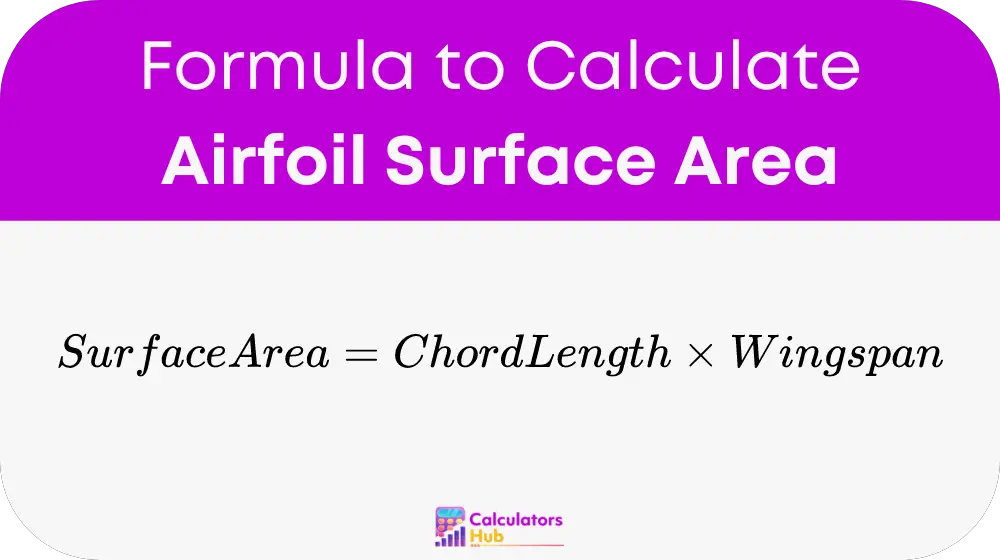The Airfoil Surface Area Calculator is an invaluable tool in the field of aerospace engineering, designed to provide precise measurements of an airfoil's surface area. This calculator helps engineers optimize airfoil designs for better aerodynamic efficiency and performance by accurately determining the total surface area based on the airfoil's dimensions.
Formula of Airfoil Surface Area Calculator
The formula to calculate the airfoil surface area is simple yet fundamental in aircraft design:

Where:
- Surface Area is the total area of the airfoil, typically measured in square meters or square feet.
- Chord Length is the straight-line distance from the front (leading edge) to the back (trailing edge) of the airfoil, measured in meters or feet.
- Wingspan is the full distance from one end of the wing to the other, measured from wingtip to wingtip, in meters or feet.
This straightforward calculation is crucial for ensuring that the aircraft meets its performance specifications and adheres to safety standards.
Table for General Terms
Here is a table that includes key terms related to the Airfoil Surface Area Calculator, which can aid in understanding and applying the tool effectively:
| Term | Definition |
|---|---|
| Surface Area | The total area of the airfoil's surface. |
| Chord Length | The distance from the leading edge to the trailing edge of the airfoil. |
| Wingspan | The total span from one wingtip to the opposite wingtip. |
Example of Airfoil Surface Area Calculator
For instance, if an aircraft's airfoil has a chord length of 2 meters and a wingspan of 30 meters, the surface area can be calculated as follows:
Surface Area = 2 meters * 30 meters = 60 square meters
This example demonstrates how the calculator can be used to determine the surface area required for designing or modifying the airfoil of an aircraft.
Most Common FAQs
Calculating the airfoil surface area is critical for assessing the lift capabilities and overall aerodynamic performance of an aircraft. It influences everything from fuel efficiency to stability and handling characteristics.
The chord length can significantly impact the lift and drag characteristics of the airfoil. A longer chord length typically increases the surface area, which can increase lift but also potentially increase drag.
Yes, the Airfoil Area Calculator is versatile and can be use for a variety of aircraft, including commercial jets, private planes, and even unmanned drones, adapting to each's unique design requirements.